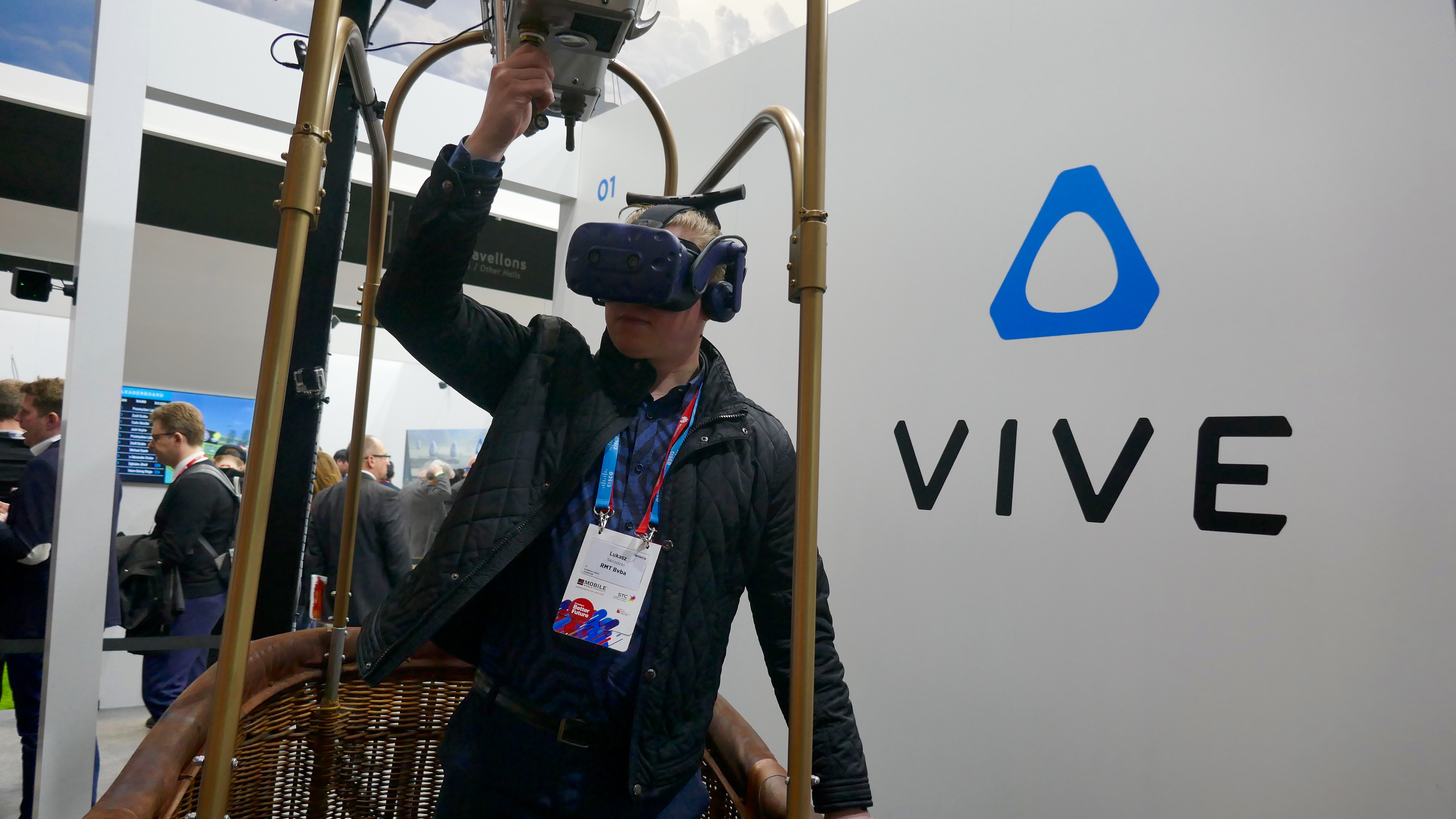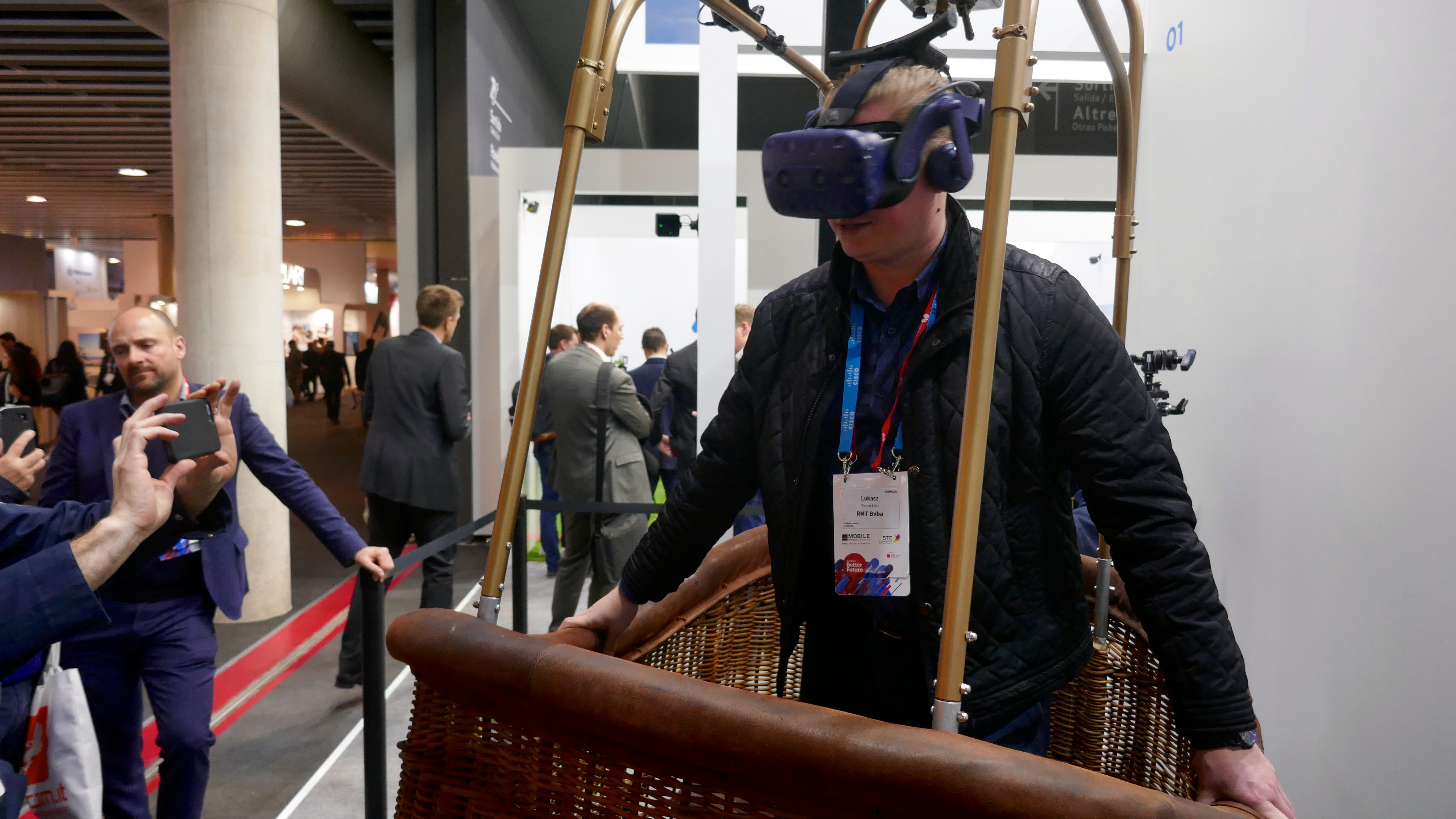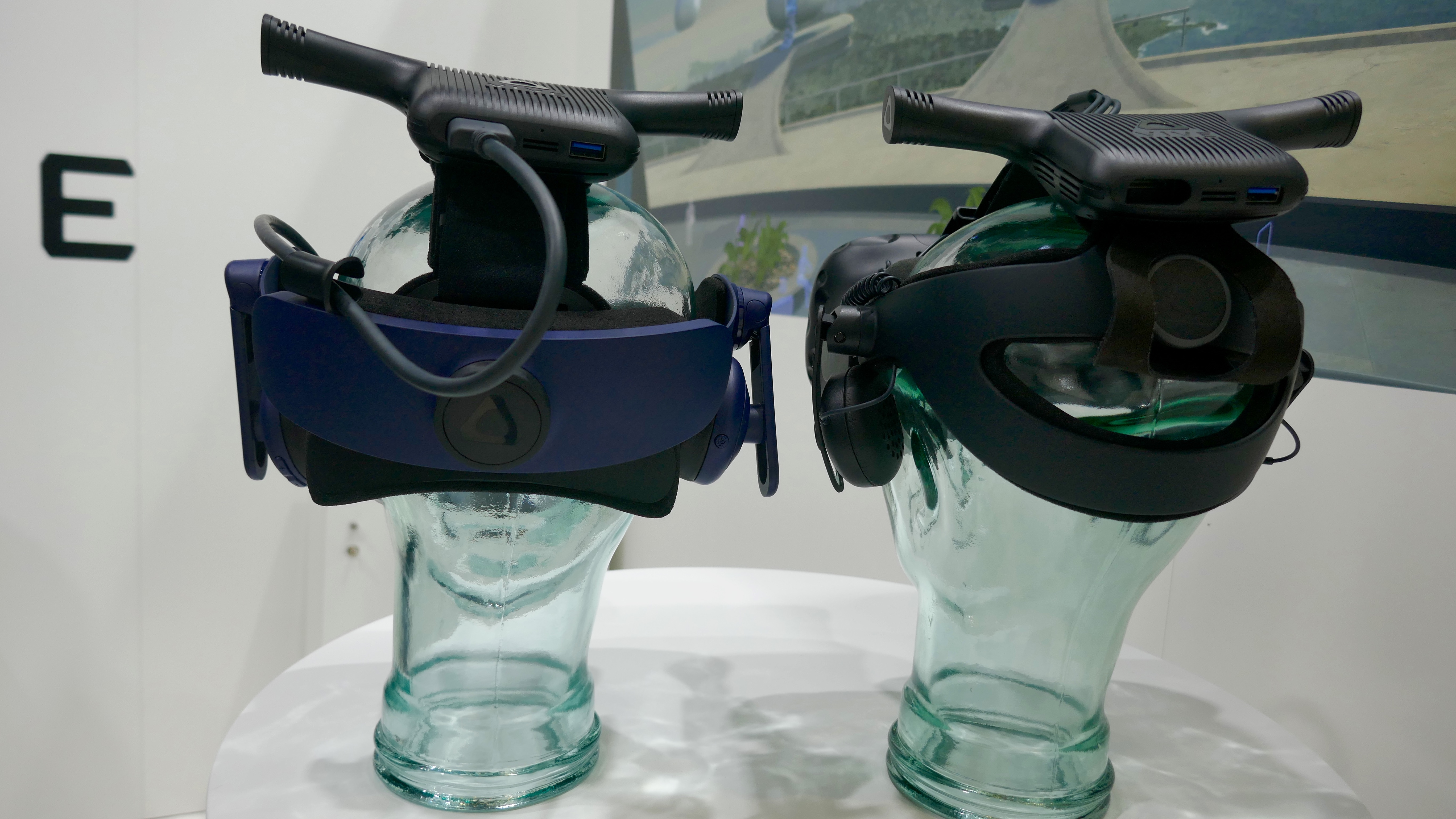Wireless HTC Vive Pro is 360-degree VR bliss
Thanks to the new Wireless Adapter, this is VR how it should be

When being four inches off the ground feels like 400 feet, the last thing you want to worry about is cables.
The Grand Canyon hot air balloon virtual reality (VR) experience showing at HTC’s booth at MWC 2018 has been designed by Janimation VR to take full advantage of the new T-shaped Vive Wireless Adapter on the HTC Vive Pro headset. It’s out in late summer (price TBC), and it’s awesome.
Strictly speaking, the experience is not VR, but MR – mixed reality. Janimation VR has attached a tracker to a real vintage hot air balloon basket, so the wearer sees and feels every slight move of the balloon in real-time. It’s raised slightly off the floor for the demo, and it all feels amazingly tactile.
See the hot air balloon VR experience in action below!
You can touch everything. As you put the headset on, you’re told to reach up and flick a switch to activate the burner. It’s a virtual switch, but it’s also a real switch. You then feel heat against your head from the element as the ground below you disappears. You shoot into the sky above a high-resolution Grand Canyon. If you’re scared of heights, you can grab hold of the steel bars in front of you, or hold the leather rests on the side. They’re also virtual, and they’re also real. This is mixed reality, after all.
However, when you lean over the side to peer at the river below, you can carry on around the perimeter of the basket – or twist through 360-degrees – without getting in a tangle. That really does give you less to worry about compared to a tethered VR experience. All while the wind blows through your hair. The only thing you can’t see is see your hands, because the experience doesn’t use HTC’s (rather bulky) trackers.
If only all VR was like this. We’ve already tested the HTC Vive Pro, and loved its high-res dual OLED display and 615dpi, but VR headsets with cables just don’t compete once you’ve tried untethered VR.
Sign up for breaking news, reviews, opinion, top tech deals, and more.

OK, so it’s not completely free of cables. While it’s smaller and lighter than the original Vive, the Vive Pro with the Vive Wireless Adapter in place still needs a battery pack. It slips easily enough in a pocket, however, and from conversations we had with Janimation VR, it lasts about 2.5-3 hours of almost constant use.
It was difficult to judge the quality of the spatial audio on the HTC Vive Pro since the only sounds in the demo were in-flight instructions from the pilot, but there were no problems with latency. And, OK, the resolution of the scene around you – while an improvement on the original HTC Vive – isn’t pin-sharp. That doesn’t stop you wanting to look at the birds flying by below, or another hot-air balloon that crosses your path.

It also doesn’t stop the VR balloon ride being scary. There’s a genuinely scary moment towards the end of the five-minute demo when the basket is coming quickly towards the floor, and almost hits the side of a rocky outcrop. It’s intense. Moments later the balloon has landed safely, and you’re left with a jelly-legged sensation.
Happily, the Wireless Adapter – which is available at the end of summer (price TBC) – works not only on the HTC Vive Pro, but also on the original HTC Vive (though a third-party wireless adaptor called the TPCast is also available). It’s a partnership between Intel’s WiGig, DisplayLink and HTC, with Intel also showing it off on the HTC Vive at its own booth.
There are two front-facing spatial cameras on the front of the HTC Vive Pro, presumably for mixed reality use, but sadly they don’t work with the Vive Wireless Adaptor … yet. Intel is on the case, but that teething issue aside, HTC’s adapter is a fine way to start a new era of untethered VR.
MWC (Mobile World Congress) is the world's largest exhibition for the mobile industry, stuffed full of the newest phones, tablets, wearables and more. TechRadar is reporting live from Barcelona all week to bring you the very latest from the show floor. Head to our dedicated MWC 2018 hub to see all the new releases, along with TechRadar's world-class analysis and buying advice about your next phone.
- HTC Vive accessories: devices to get the most out of your VR headset
- HTC Vive vs Oculus Rift: which is better?

Jamie is a freelance tech, travel and space journalist based in the UK. He’s been writing regularly for Techradar since it was launched in 2008 and also writes regularly for Forbes, The Telegraph, the South China Morning Post, Sky & Telescope and the Sky At Night magazine as well as other Future titles T3, Digital Camera World, All About Space and Space.com. He also edits two of his own websites, TravGear.com and WhenIsTheNextEclipse.com that reflect his obsession with travel gear and solar eclipse travel. He is the author of A Stargazing Program For Beginners (Springer, 2015),